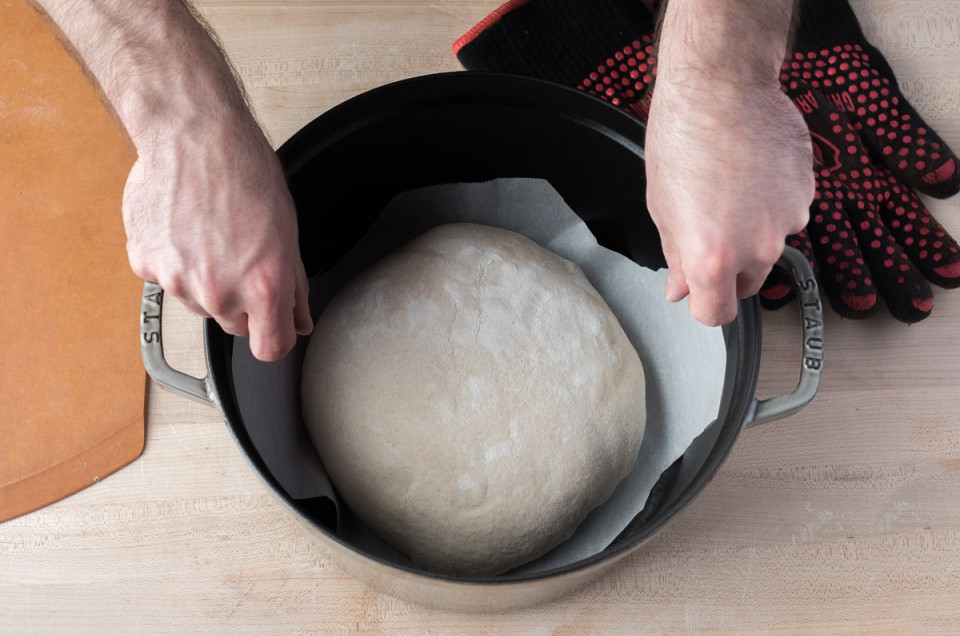


Maurizio Leo, head baker behind The Perfect Loaf, regularly posts here on artisan bread recipes and techniques.
Among the many steps we perform to bake bread at home, there's one crucial step that we often overlook until the very end. When the time comes to bake and we realize we need to figure out how to get our delicate dough into a blisteringly hot pot and into the oven, a bit of panic might take root. Fret not, this post on transferring bread dough from proofing basket to hot oven has a few methods to ensure our dough gets safely into the oven with little negative impact.
Each of the common baking methods below provides steam for a wonderful crust and crumb. Don't worry if your baking setup doesn't look exactly the same; these methods are similar enough to apply to a different pot or oven setup. For example, if you don’t have a Dutch oven, a cloche will work in just the same way.
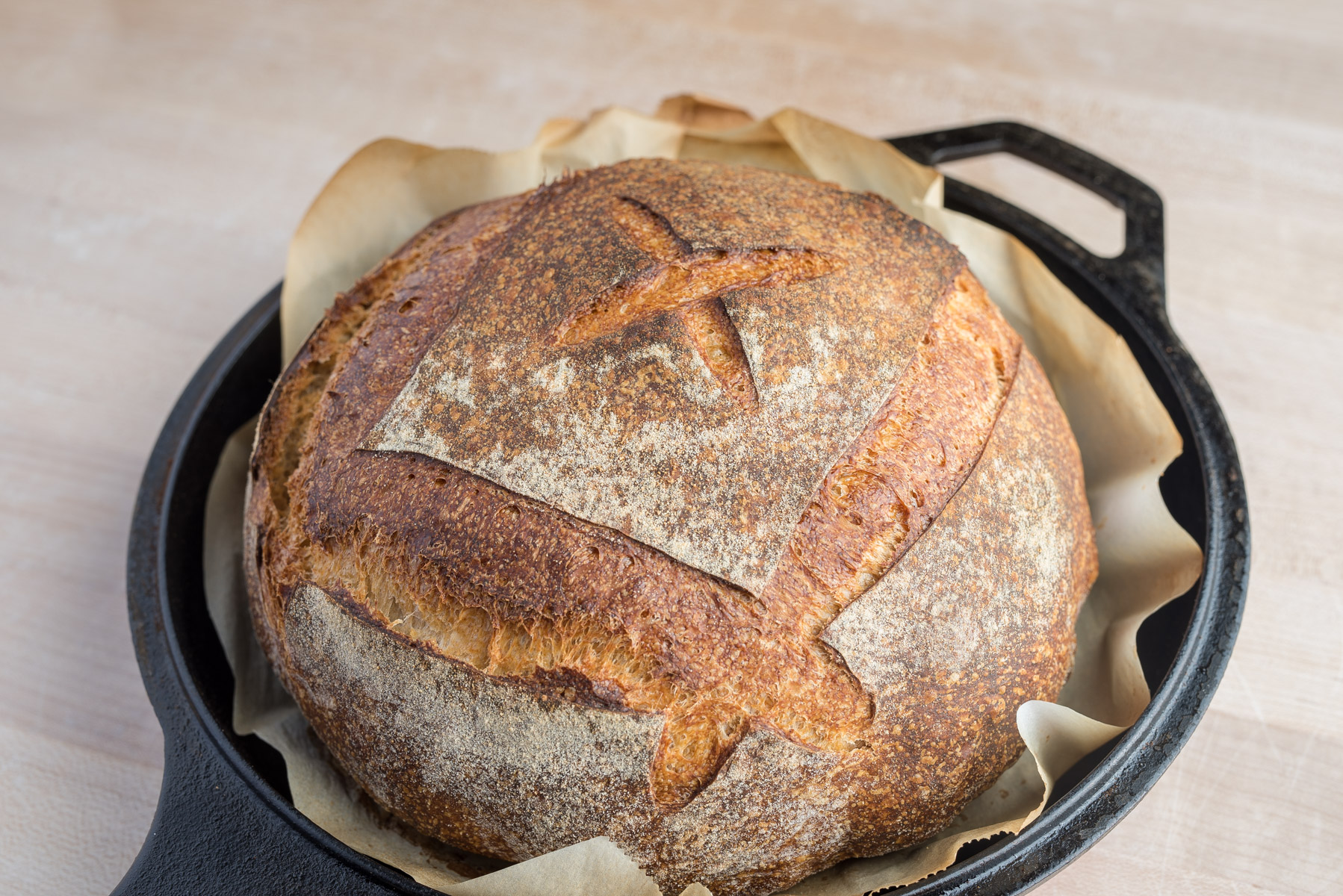
Why do we need steam in the oven at all?
Steam at the beginning of a bake helps keep the outer dough skin moist and supple. This promotes maximal expansion in the oven before a hard crust forms. When a dough is baked with insufficient steam, it will sometimes have a pale crust and sub-optimal rise.
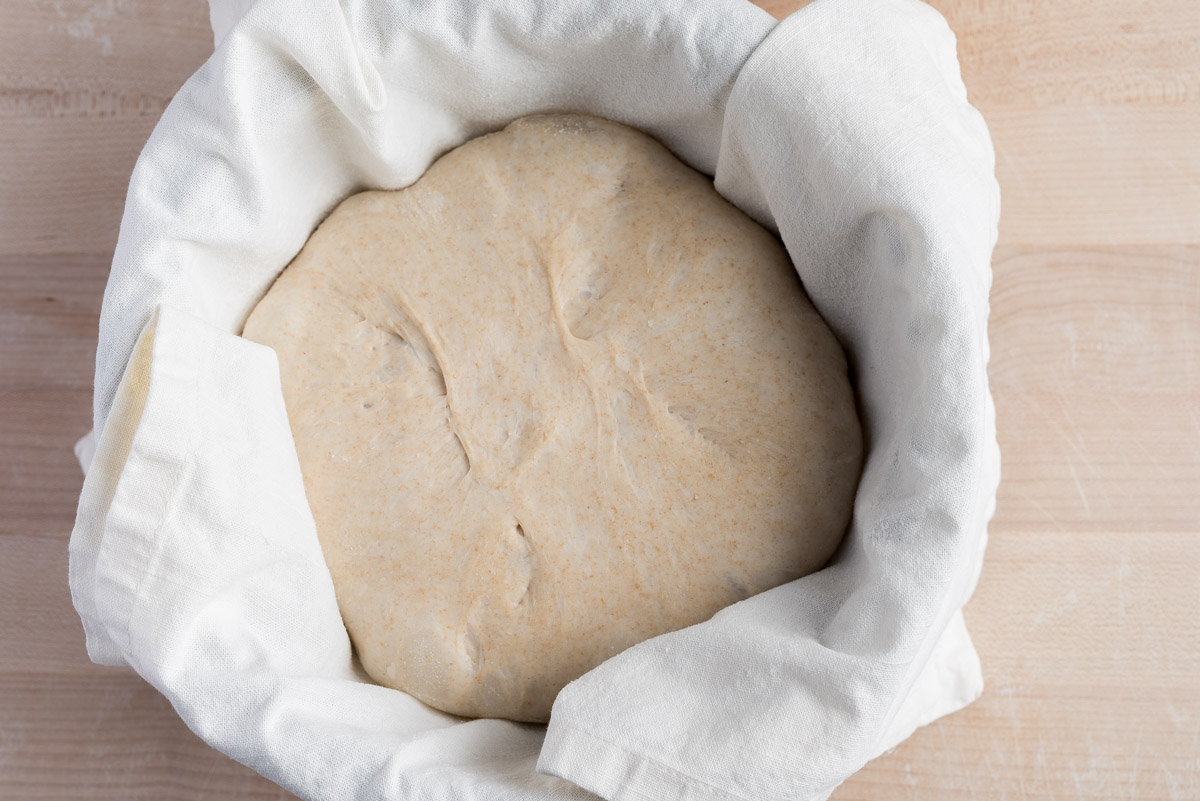
First, a note about using parchment paper: I almost always use it when baking bread at home. It not only makes moving the dough around easier but it also adds a thin layer of insulation to the dough to prevent an over-baked bottom crust. Further, I haven't seen a downside to using it; the resulting crust on my bread is just as crunchy.
It helps to plan out each step of the transfer process before beginning. Decide where you'll place the hot pot on your counter and have your oven-safe gloves ready!
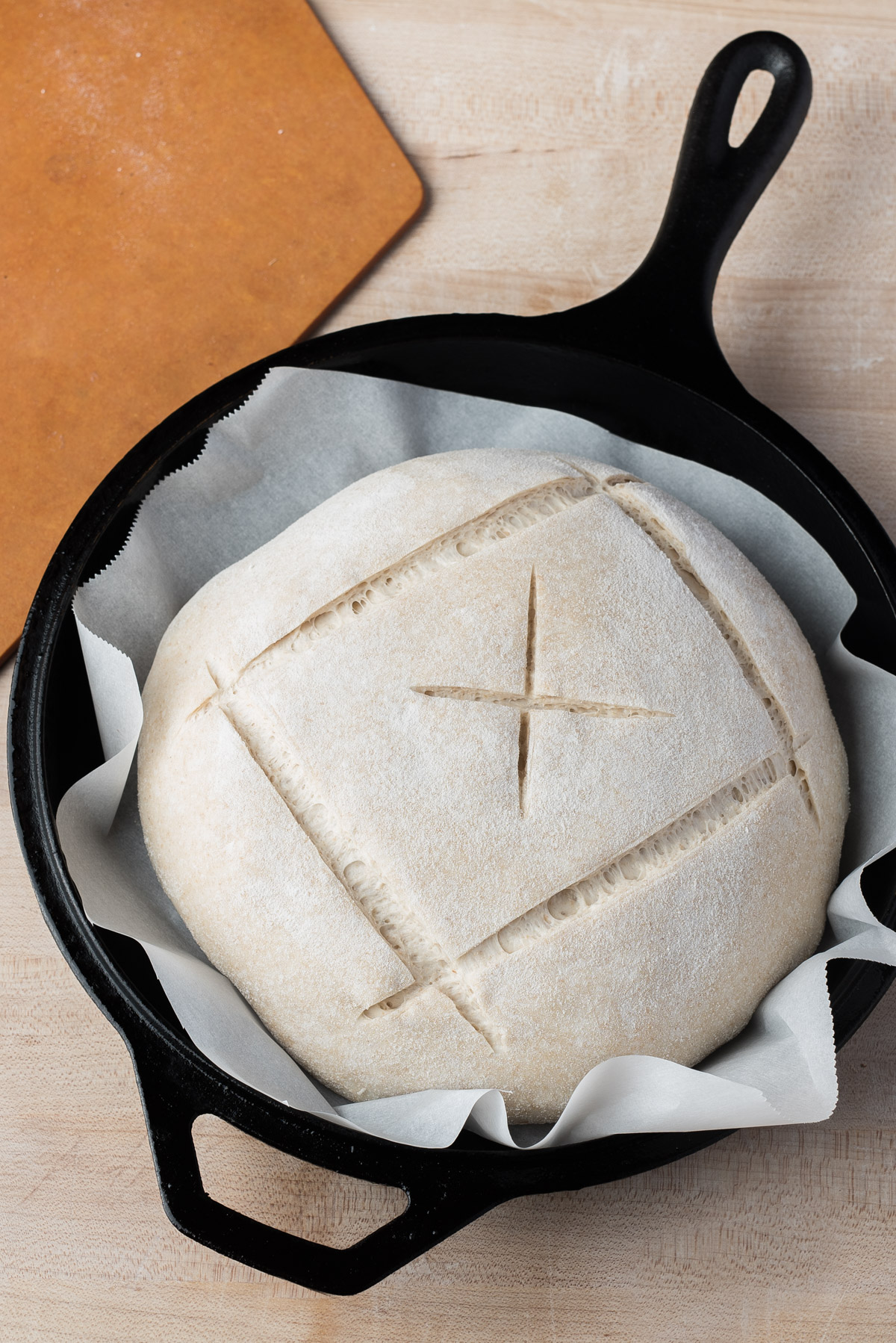
A cast iron combo cooker is similar to a Dutch oven (lidded pot). The difference is the cooker has a deep end and a shallow end that are each usable on their own. The iron radiates heat effectively when in the oven and the pot seals when put together to trap steam naturally.
Transferring dough into a blisteringly hot, preheated cooker can be tricky. To safely get scored dough into the pot I use a piece of parchment paper to drag it in. Dragging not only keeps your hands free of the pot but it also prevents dropping the dough.
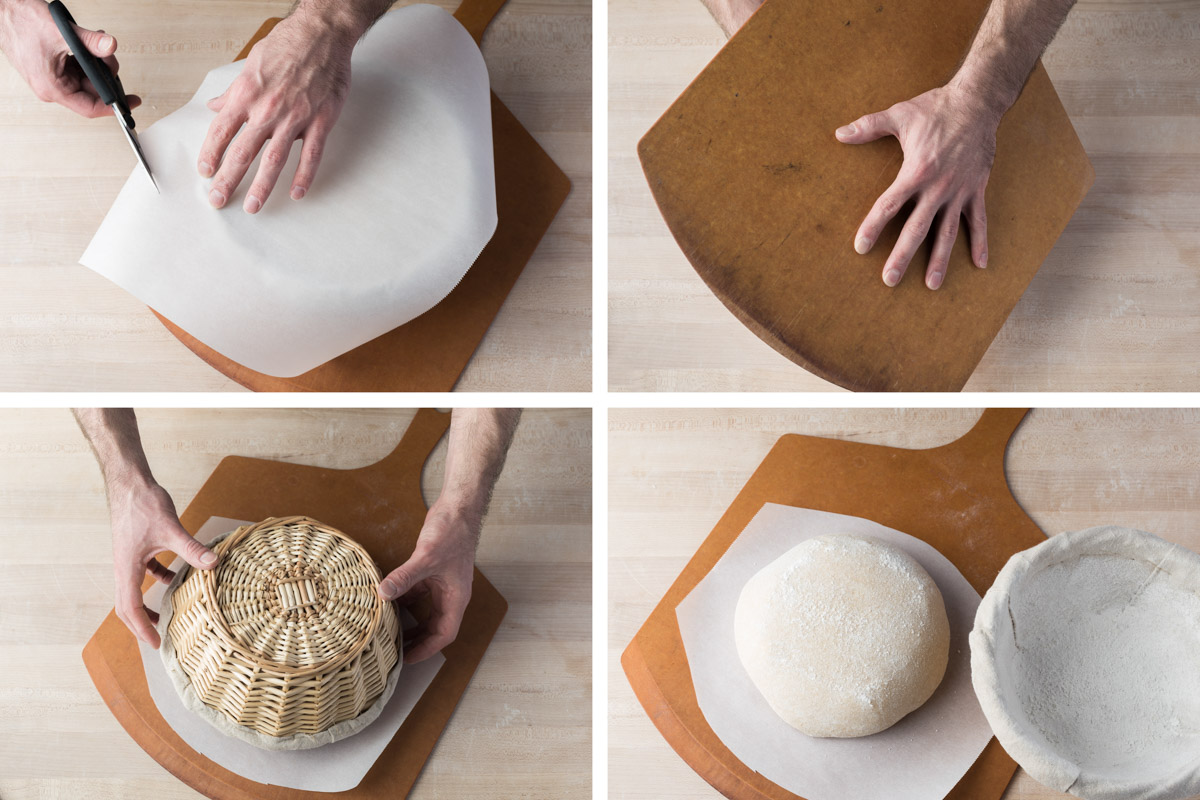
Take your proofing basket and place a square piece of parchment over the top. Cut the parchment to fit the basket’s opening with a small border overhang. Then, take a pizza peel (or an inverted baking sheet) and place it on top of the parchment. Quickly flip the entire stack over so the peel is now on the bottom with the basket and parchment paper on top.
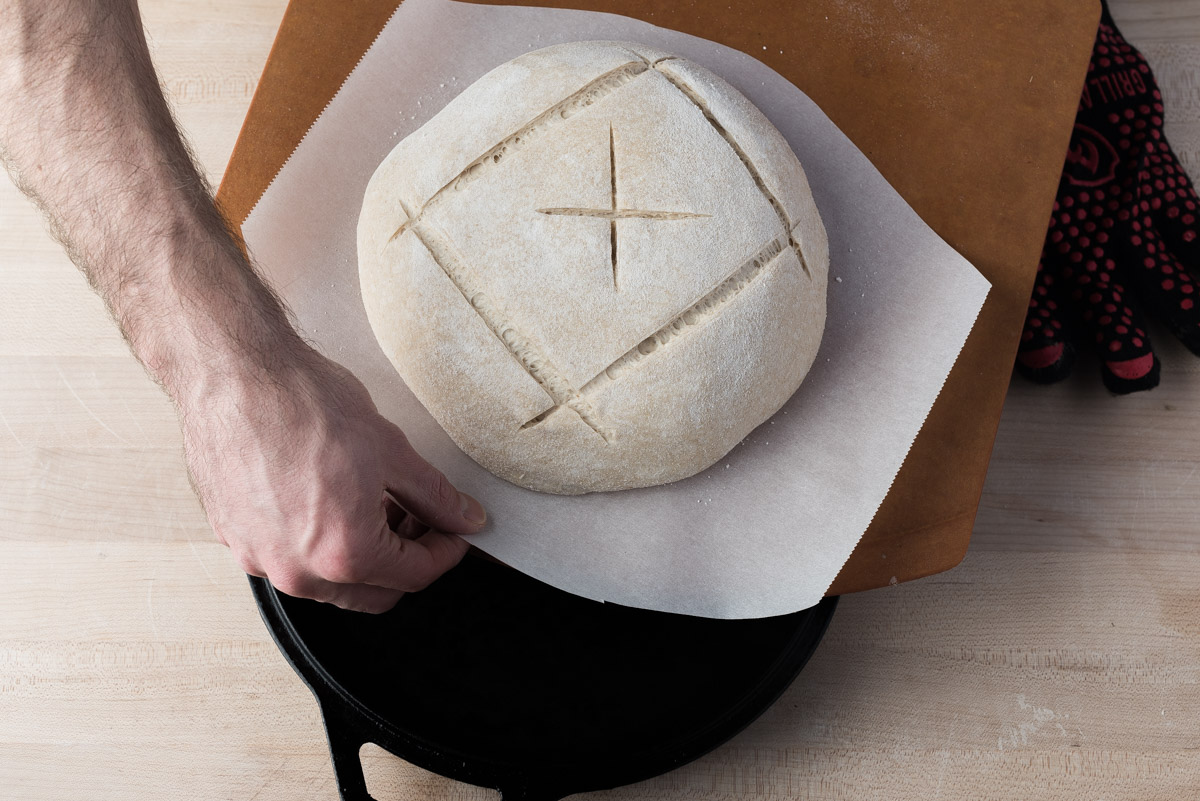
Remove the preheated shallow side of the pot from the oven, and place it on a prepared heatproof rack. Then, score the dough and drag the parchment with dough on top into the hot pot. Don't worry if your parchment gets trapped and extends outside of the pot when the lid is placed on top. Bake as usual.
A Dutch oven is similar to a cloche bread baker but is often made of metal instead of clay and has a deep side and a shallow lid. Just like the combo cooker, a Dutch oven is a common baking vessel because it radiates heat nicely and seals when closed. It can be challenging to lower dough all the way to the bottom of these (with their deep sides) without dropping it from a high distance, potentially degassing your dough. Additionally, keeping your hands and arms clear of the hot sides makes lowering in the dough that much harder.
A solution to these issues is to once again use parchment paper. This time we’ll cut the paper to create a “sling” that has two handles at the sides and a short top and bottom. The handles let us lower the dough into the pot slowly without having excessive parchment inside the pot, potentially causing bumps and wrinkles in the dough as it bakes.
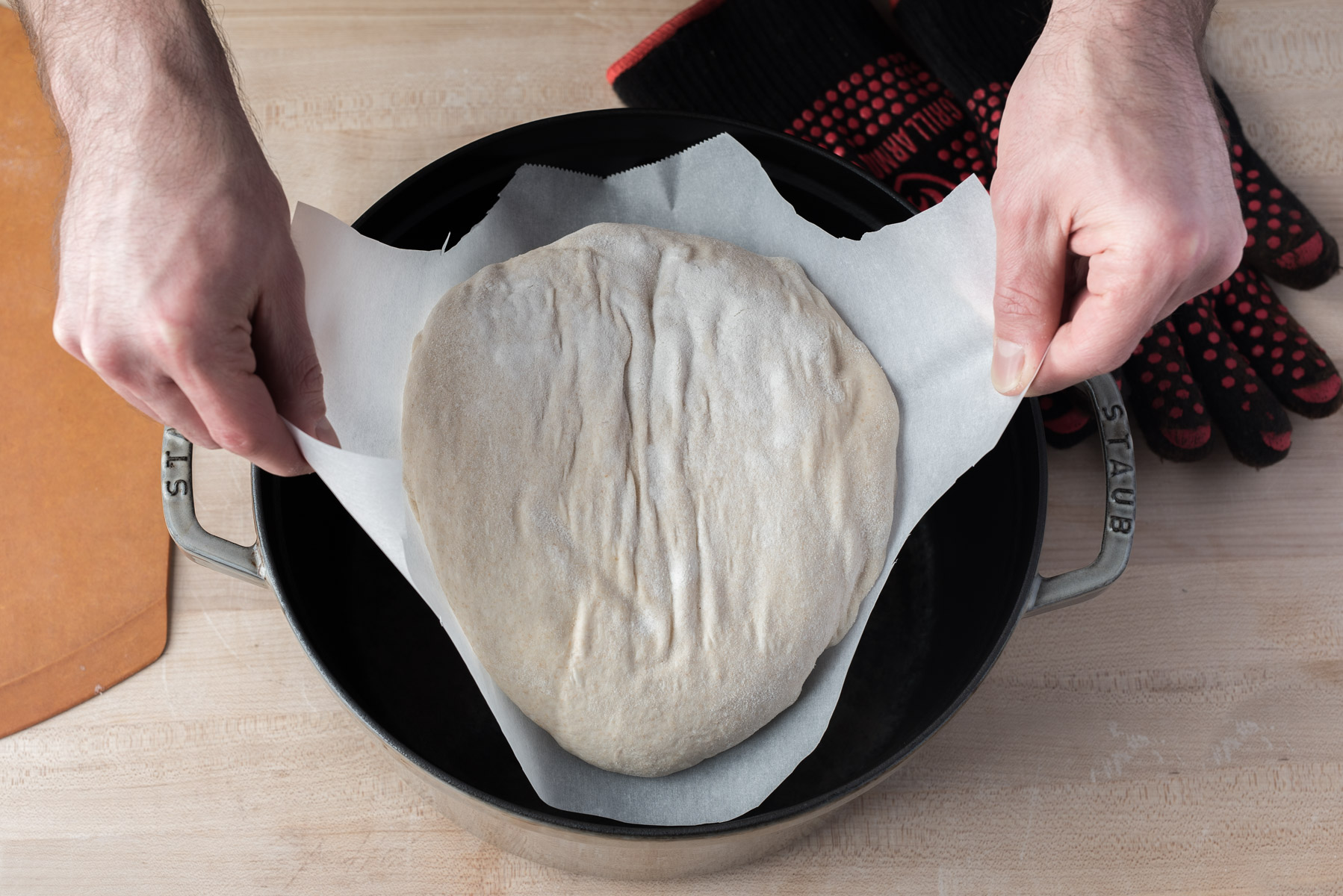
Place your Dutch oven in the oven and preheat according to the manufacturer’s specification. Some cannot be preheated empty, so first check your manufacturer's recommendation.
When heated, place a piece of parchment paper on top of your proofing basket. Cut the paper into a rectangular shape that’s a little wider than it is tall. At each corner, cut a curve to form a “handle” at the left and right side of the dough (see above). Then place the parchment on top of your proofing basket and place a pizza peel on top of the parchment and basket opening. Flip the entire stack over so the dough is now resting on the parchment and the peel.
Score the dough and then put on your oven-safe gloves. Remove the deep end of the preheated Dutch oven from your oven and place it on a heatproof rack on your counter. Grab the parchment handles and lift your dough up and into the hot pot. Place the pot back into the oven and cover with the lid to bake.
Steaming a home oven without a pot has been discussed here before, but it’s worth further exploring a way to easily get one or two loaves into and out of the oven.
Cut a piece of parchment paper that’s either wide enough to fit a single loaf, or if baking two loaves at a time, as wide as your baking stone. If baking two, I sometimes find it helpful to then cut the wide paper rectangle in half so I can adjust the loaves in the oven by dragging the papers closer together or farther away from each other. We’ve all made the mistake of loading two loaves too close together and they end up touching in the oven!
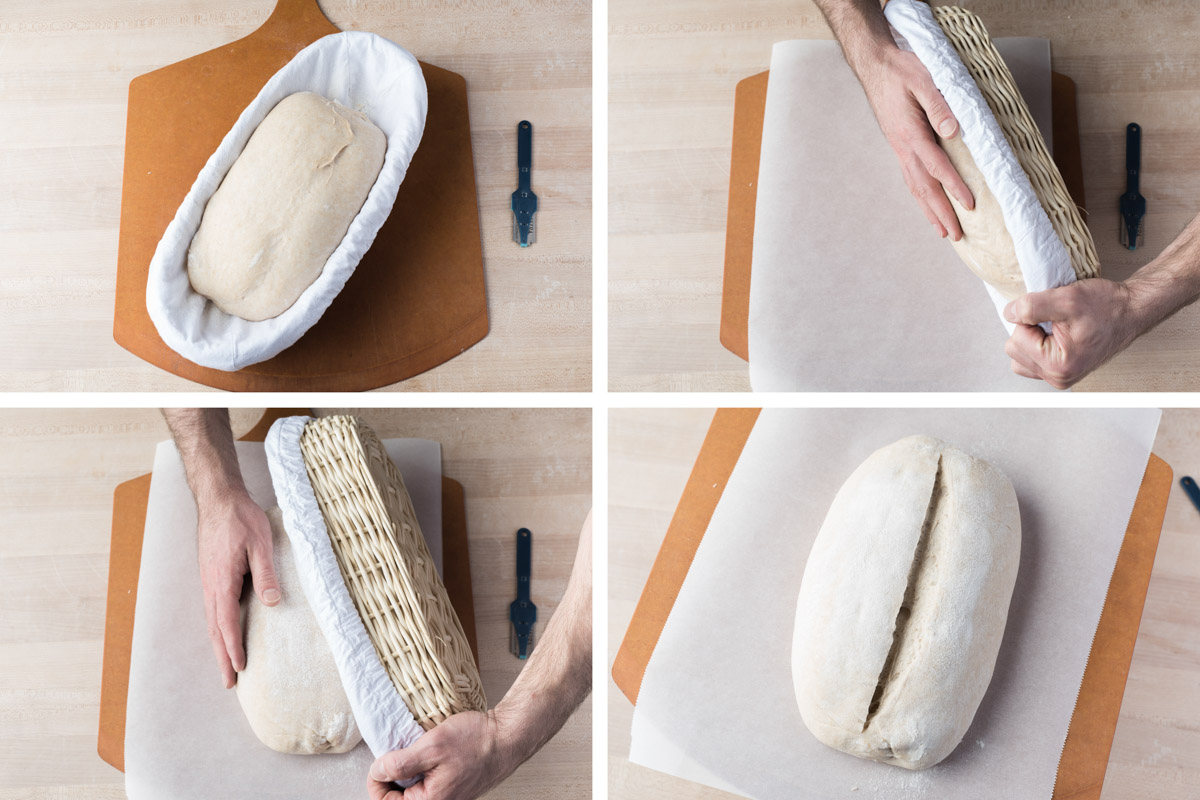
Place the parchment paper on a pizza peel (or again, an inverted baking sheet) and quickly turn your dough. Usually oval baskets are not as deep as they are wide, so it’s hard to place the peel on top of the basket without smashing the dough. However, if you’re baking a round loaf you might be able to place the peel directly over the round basket and flip as before.
Next, open your preheated oven and drag (or scoot) the parchment and dough onto your baking stone (or as seen below, a Baking Steel).
Then, steam the oven as usual.
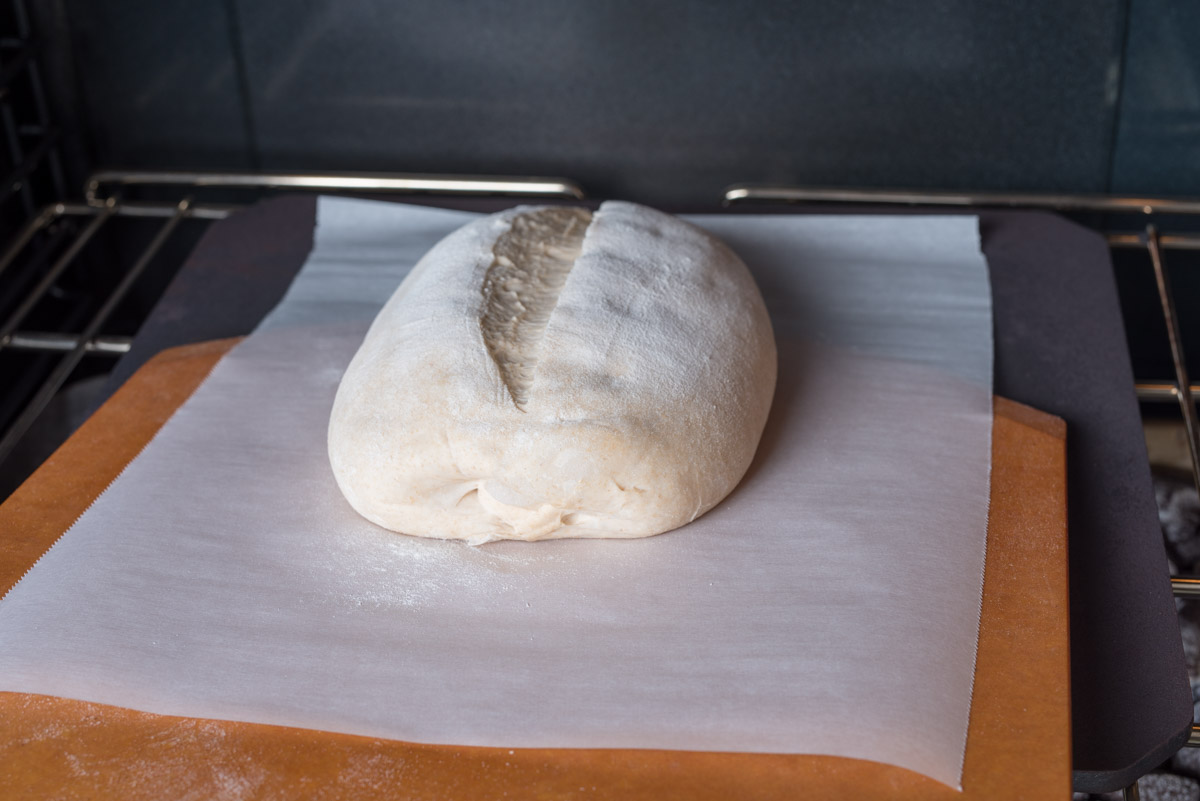
When your bread is baked, perform the reverse steps and remove it from the oven. Use the pizza peel to slide it under the parchment and remove the baked loaf.
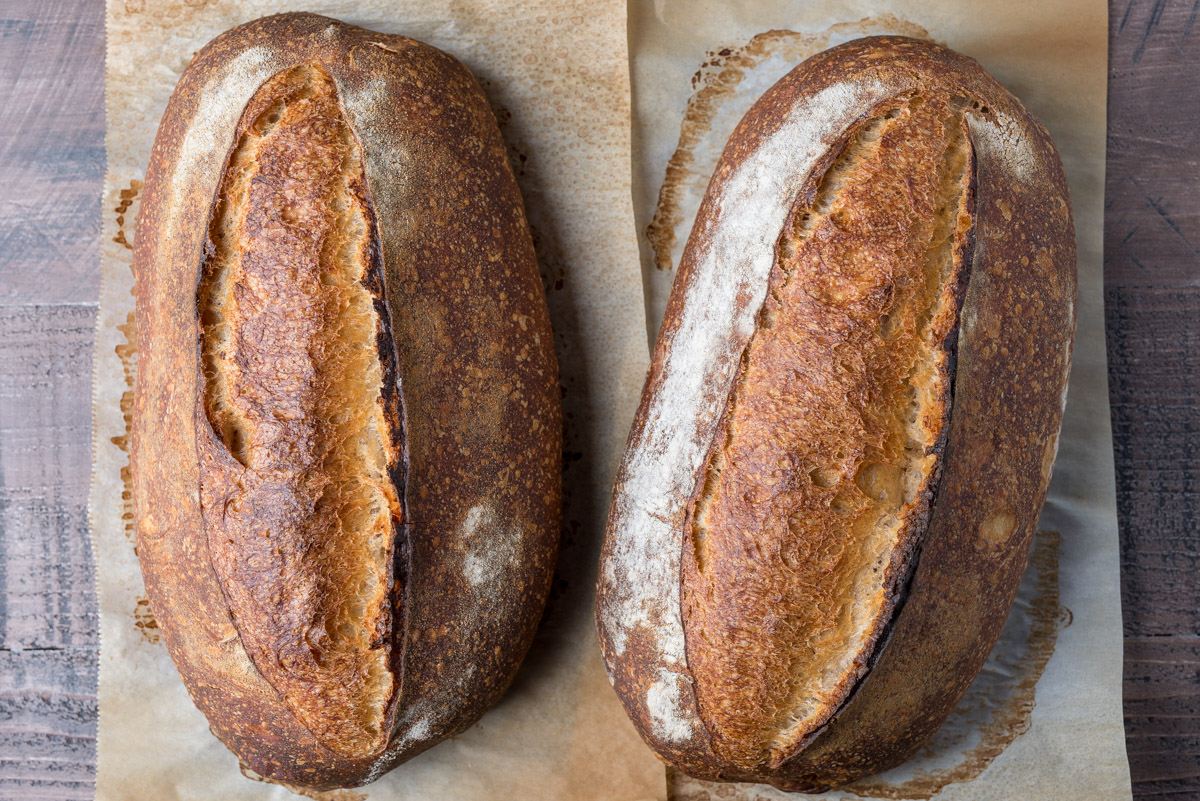
In each of the methods above, parchment paper helps the dough get into your home oven without damage. With practice, loading dough in a home oven shifts from a hectic operation to one that's just another part of the process.
For more artisan bread techniques, check out my guide to scoring bread dough and Barbara Alpern's walkthrough on how to properly steam in bread in a home oven.